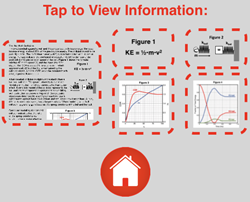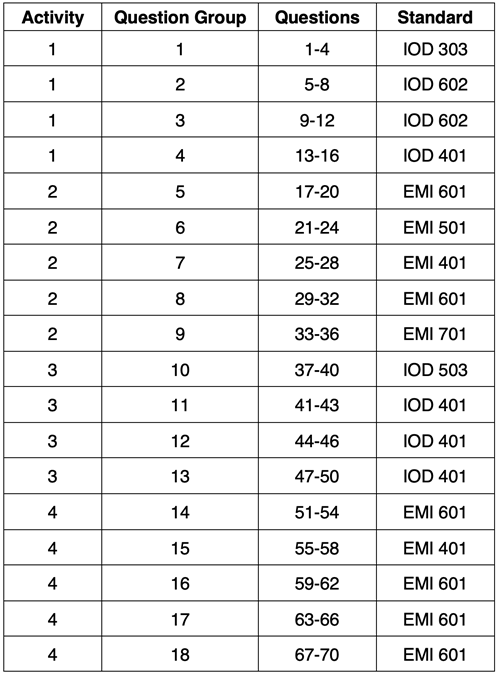About the Science Reasoning Center
 Highly Recommended
Highly RecommendedLike all our Science Reasoning Center activities, the completion of the Ball-Bat Collision activity requires that a student use provided information about a phenomenon, experiment, or data presentation to answer questions. This information is accessible by tapping on the small thumbnails found on the bottom right of every question. However, it may be considerably easier to have a printed copy of this information or to display the information in a separate browser window. You can access this information from this page.
The Standards
The Ball-Bat Collision activity presents a spring model for explaining the collsion between a bat and ball in baseball. Two graphs, an equation and a diagram are used to present information about the transfer and the transformation of energy that occurs during the collision. Questions target a student's ability to make predictions based on an equation, to select values from a graph, to reason towards conclusions that are consistent with a model, and to combine information from two data presentations in order to identify an appropriate conclusion. Success with the activity requires some degree of proficiency with respect to ...
- Developing and Using Models (Science and Engineering Practice 2.3)
Develop, revise, and/or use a model based on evidence to illustrate and/or predict the relationships between systems or between components of a system. - Developing and Using Models (Science and Engineering Practice 2.6)
Develop and/or use a model (including mathematical and computational) to generate data to support explanations, predict phenomena, analyze systems, and/or solve problems. - Using Mathematics and Computational Thinking (Science and Engineering Practice 5.3)
Use mathematical, computational, and/or algorithmic representations of phenomena to describe and/or support claims and/or explanations. - Systems and System Models (Crosscutting Concept 4.2)
Models (e.g., physical, mathematical, computer models) can be used to simulate systems and interactions—including energy, matter, and information flows—within and between systems at different scales. - Energy and Matter (Crosscutting Concept 5.4)
Energy cannot be created or destroyed—it only moves between one place and another place, between objects and/or fields, or between systems.
While The Ball-Bat Collision activity addresses the three NextGen Science and Engineering Practices and the two crosscutting concepts above, the activity drew its greatest inspiration from ACT's College Readiness Standards for Science Reasoning. The activity consists of 70 questions organized into 18 Question Groups that are spread across the four activities. All three strands (Interpretation of Data - IOD; Science Investigation - SIN; and Evaluation of Models, Inferences, and Experimental Results - EMI) of the College Readiness Standards are addressed in this activity. The code given for the standard includes three letters to indicate the strand and three numbers to indicate the specific standard within that strand. Higher numbers are indicative of more complex science reasoning skills. The relationship between the questions and the standards is as follows:

Recommended: Print Passage, Tables, and Graphs
Also see: